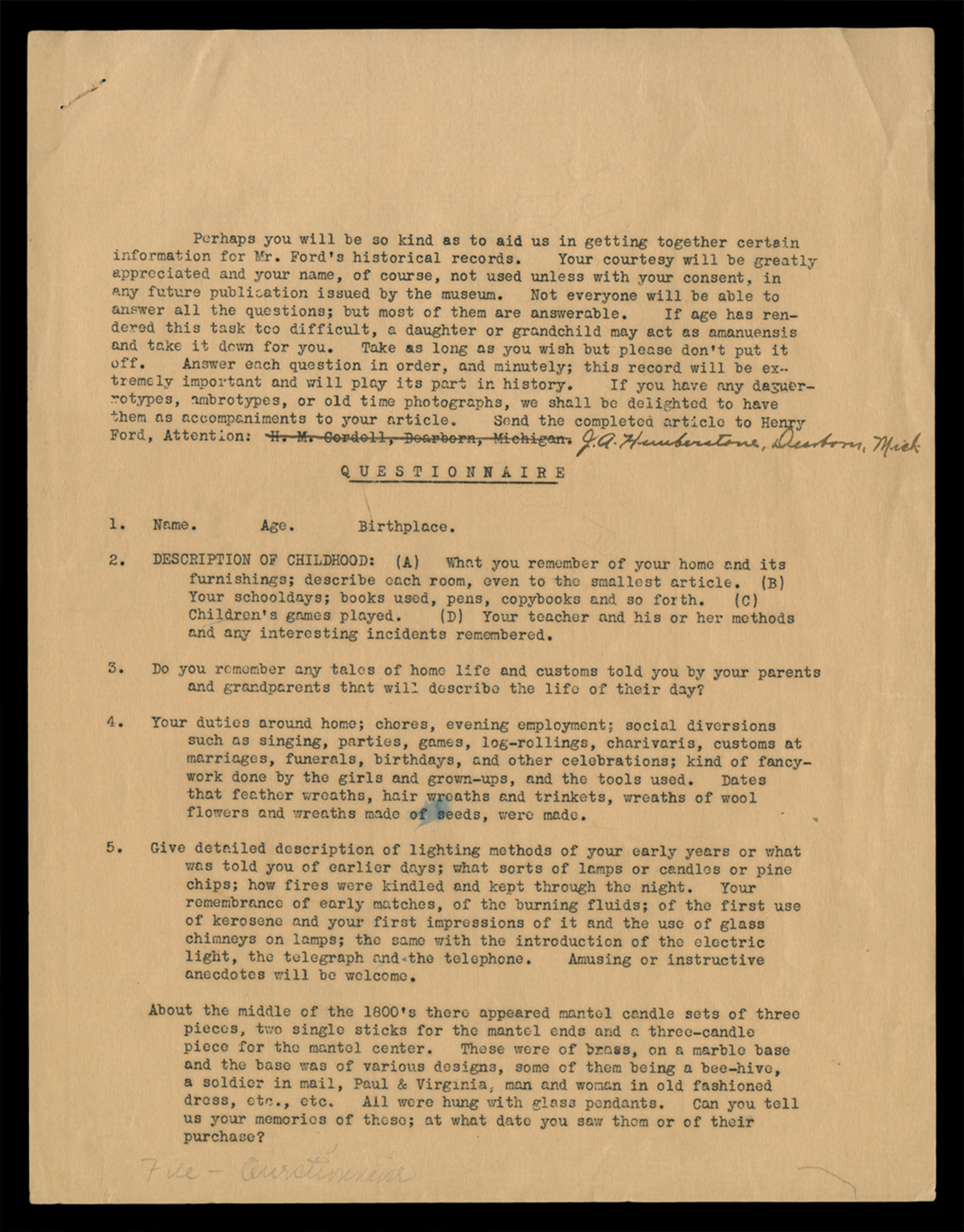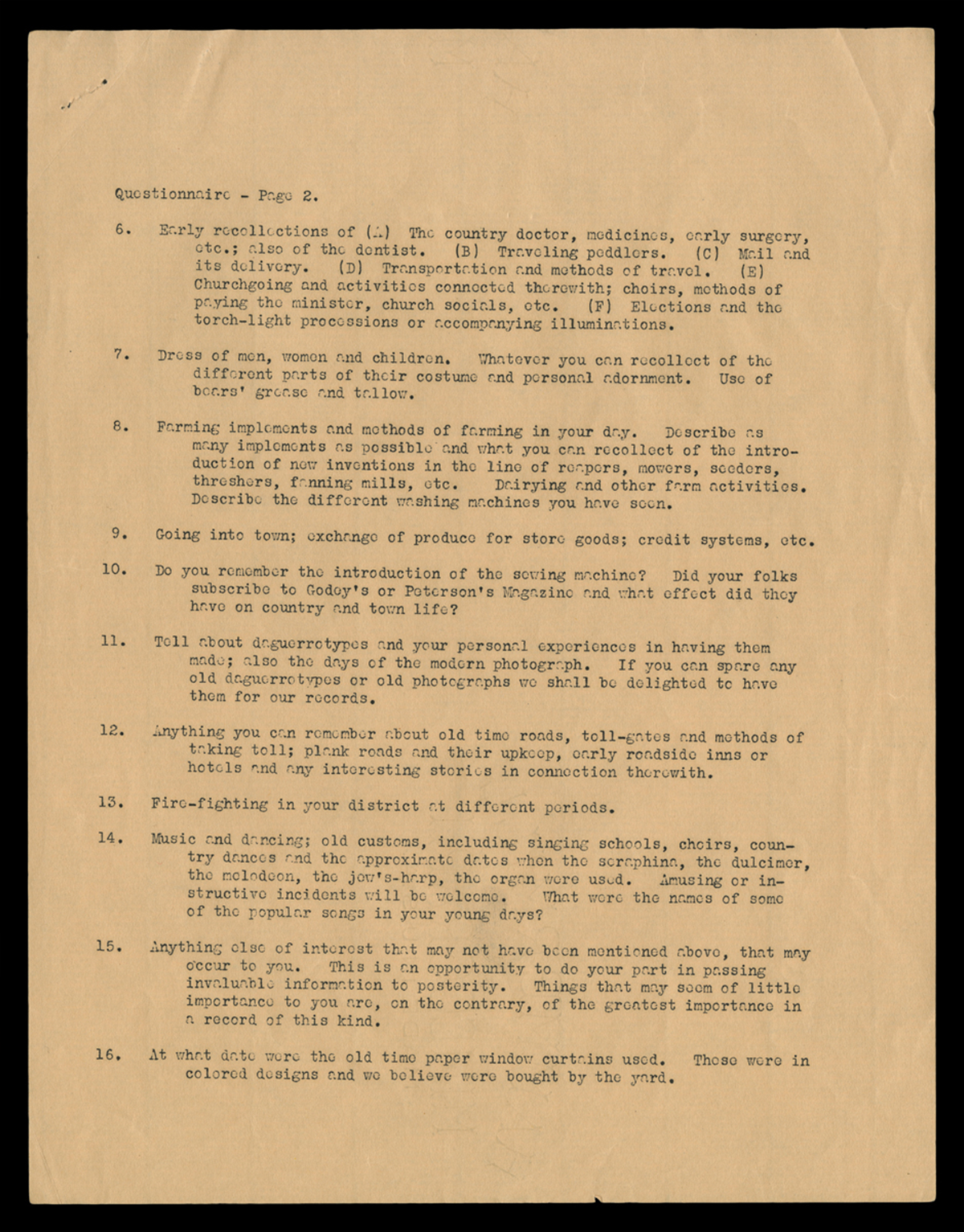History Outside the Box: Voices from the Past
History is often defined as a continuous, typically chronological record of important or public events or of a particular trend or institution. To this, Henry Ford would say “History is bunk.” Why would he say that? Because to him, history was more than stories or dates in books, famous pieces of artwork or even collections of the wealthy. History was much, much more. He felt, as many of us do today, that history is how people live and work every day and connect to the world around them, and that it can be kept in many different formats, from written to oral traditions.
With this mindset, Henry Ford sought a way to teach about everyday life. He did so by not only collecting the objects you can see in Henry Ford Museum of American Innovation or Greenfield Village but by setting out to collect memories. This was done by instructing museum assistants H.M Cordell and J.A. Humberstone to create a questionnaire. In 1929, this questionnaire would be sent to people who were 75 years or older, Ford being 65 years of age himself at the time.
While some questionnaires were sent to donors, some to nursing homes and some to a club in Battle Creek called Three-Quarter Century Club, of which Dr. John Harvey Kellogg was a member. Cordell and Humberstone went so far as to solicit names and addresses of people 80-90 years old from various groups to send the request to. These letters said that “Mr. Ford is sending these only to those possessing the correct understanding of their real importance, who will not neglect the little details forgotten by most historians. The time will come when these questionnaires … will furnish a most absorbing history of the entire Victorian era.”
For the questionnaire, people were asked to answer some basic questions and there was an understanding that their names would not be used without permission.
Basic questions included name, age and birthplace. More detailed questions, included such things as descriptions of lighting methods in the early days of the person's home, styles of dress and even fire-fighting methods. Images were asked to be sent in along with responses responses, offering a wonderful glimpse into a world far away through the eyes of those who lived and breathed in a time gone by.

Questionnaire for Edison Institute Historical Records, 1929 (Page 1) / THF131973

Questionnaire for Edison Institute Historical Records, 1929 (Page 2) / THF131974
The nearly 150 or so responders would have been children before Abraham Lincoln became president in 1861. They shared firsthand accounts and a glimpse of life in the 19th century as it was lived. These stories also added information about the thousands of objects that were collected for the museum and how and why they were used in the past.
This E.I. Historical Questionnaire collection lives on in The Henry Ford’s archives for generations to come and help give answers to a time gone by. It has been used by researchers, curators and the like over time and personally, I find it fascinating. If you’d like to learn more about this collection or any other, please email us at research.center@thehenryford.org
.If you were going to send out a request like this to people who lived in the 20th century, what would you ask them? Would you want to know about the first time someone saw an airplane or flew? Or perhaps how they handled the turn of the century in 2000?
What stories would you want future generations to know about your everyday life, objects or technology used?
Perhaps it’s time to talk with your grandparents, parents or other relatives to find out more.
Stephanie Lucas is a research specialist at The Henry Ford.

